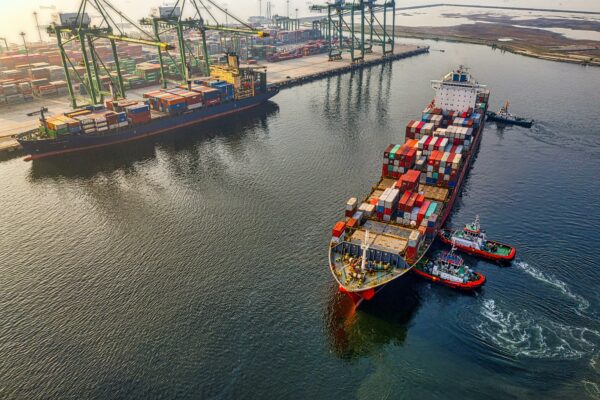Zencargo Market Update: 6th March
Mar 06, 2023
Scroll to find out more
Mar 06, 2023
Scroll to find out more

In recent months there has been growing decoupling rhetoric between Chinese and Western economies. The Biden administration has vowed to create ‘China- Free’ supply chains and blacklisted dozens of Chinese companies. There has also been discussion, of which we have contributed to in our market updates, of a manufacturing shift away from China to other hubs such as Vietnam and India.
But pushing rhetoric aside, the numbers reveal a paradox: how can China, often characterised in the media as a US economic adversary, also be their largest trading partner? A quantitative truth flying in the face of decoupling discourse, a truth which only seems to grow year on year.
2022 was a record breaking year for U.S – China bilateral trade with combined imports and exports reaching $690 billion. A $31 billion increase in imports from China compared with 2021. Trade is not a 1 way street either, US exports to China also grew by $2.4 billion. These numbers are also reflected in the sentiments of US business leaders, with a poll of 300 companies conducted by the American Chamber of Commerce in Shanghai revealing that 70% of American manufacturers had no plans to move production out of China. This growth is not confined to the US either, trade volumes between China and the EU were up 23% from 2021 levels, reaching $910.6 billion.
However some analysts have been quick to point out that a shift is happening, slowly but gradually. US imports from Vietnam have increased from 10% to 16% between 2018 to 2021 and imports from Mexico have also been on the rise from $293.5 billion in 2016 to more than $384 billion in 2021.
As we move through 2023, with demand remaining low and inventory levels high, what can we expect from the year ahead? Will 2023 be yet another record breaking year for trade between China and the West? Or will market and geopolitical pressures force businesses to adapt, facilitating shifts in the order of global supply chains?
Ocean
Air
Central China to USA and Europe
North China to USA and Europe
South China to USA and Europe
Ocean
Ocean
Ocean
Road
European Bank Holidays
We anticipate a shortage of availability and the occurrence of delays around the bank holiday periods. Plan ahead and allow extra time for your products to be delivered.
February 28 – Spain*
March 1 – Bosnia Herzegovina*, Spain *, Switzerland*
March 3 – Belgium
March 8 – Belarus, Germany*, Moldova, Russia, Ukraine
March 11 – Lithuania
March 13 – Spain*
March 15 – Hungary
March 17 – Ireland (Eire)
March 19 – Austria*, Malta
March 20 – Spain*
March 25 – Cyprus, Greece
March 31 – Malta
April 1 – Cyprus, San Marino
April 6 – Andorra*, Denmark, Faroe Islands, Greenland (Kalaallit Nunaat), Iceland, Norway, Portugal*, Spain, Svalbard and Jan Mayen, Switzerland*
April 7 – Andorra, Austria*, Czech Republic, Denmark, Estonia, Faroe Islands, Finland, France*, Germany, Gibraltar, Greenland (Kalaallit Nunaat), Guernsey and Alderney, Hungary, Iceland, Ireland (Eire)*, Isle of Man, Jersey, Latvia, Liechtenstein*, Luxembourg*, Malta, Netherlands*, Norway, Portugal, Saint Helena, Slovakia, Spain, Svalbard and Jan Mayen, Sweden, Switzerland*, UK (United Kingdom), Åland (Ahvenanmaa)
*Not in all regions
The information that is available in the Weekly Market Update comes from a variety of online sources, partners and our own teams. Click below to learn more about how Zencargo can help make your supply chain your competitive advantage.

Last updated: Monday 3pm BST On Friday 19th July, an unprecedented global issue...

In Focus: Port congestion in Colombo and Singapore continues Recent weeks have...

In Focus: The Space Race Continues With consumption back on the menu, space is...